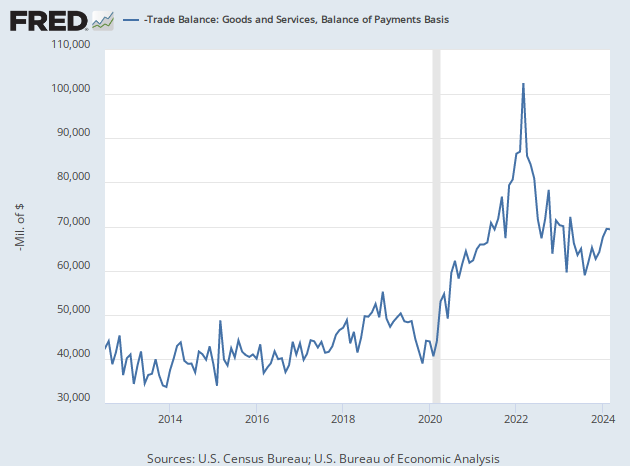The U.S. trade deficit narrowed by more than $10 billion in July as consumer demand for imports weakened and the strong dollar weighed on the price of foreign goods.
The Commerce Department said on Wednesday that the U.S. trade deficit fell 12.6 percent in July to $70.6 billion, $10.2 billion lower than the prior month. The trade deficit has declined each month since March and is now at its lowest level since November 2021.
Imports declined by 2.9 percent to $329.9 billion in July. Imports of consumer goods fell by $7.4 billion, including a $3 billion decline in pharmaceuticals and a $900 million decline in imported toys, games, and sporting equipment.
Imports of industrial supplies and materials decreased $1.8 billion. Imports of crude oil increased by $1 billion while imports of other petroleum products fell by $700 million.
Automotive vehicles, parts, and engines increased $1.8 billion. Passenger car imports rose by $600 million.
Exports climbed 0.2 percent to $259.3 billion.

The smaller trade gap is expected to give a lift to gross domestic product in the third quarter. It appears increasingly likely that the economy will be seen as expanding in the third quarter of 2022 following two straight quarters of contraction. A lower trade deficit adds to GDP, just as a rising deficit subtracts. The first quarter contraction reflected, in part, a surge in the trade deficit.

COMMENTS
Please let us know if you're having issues with commenting.